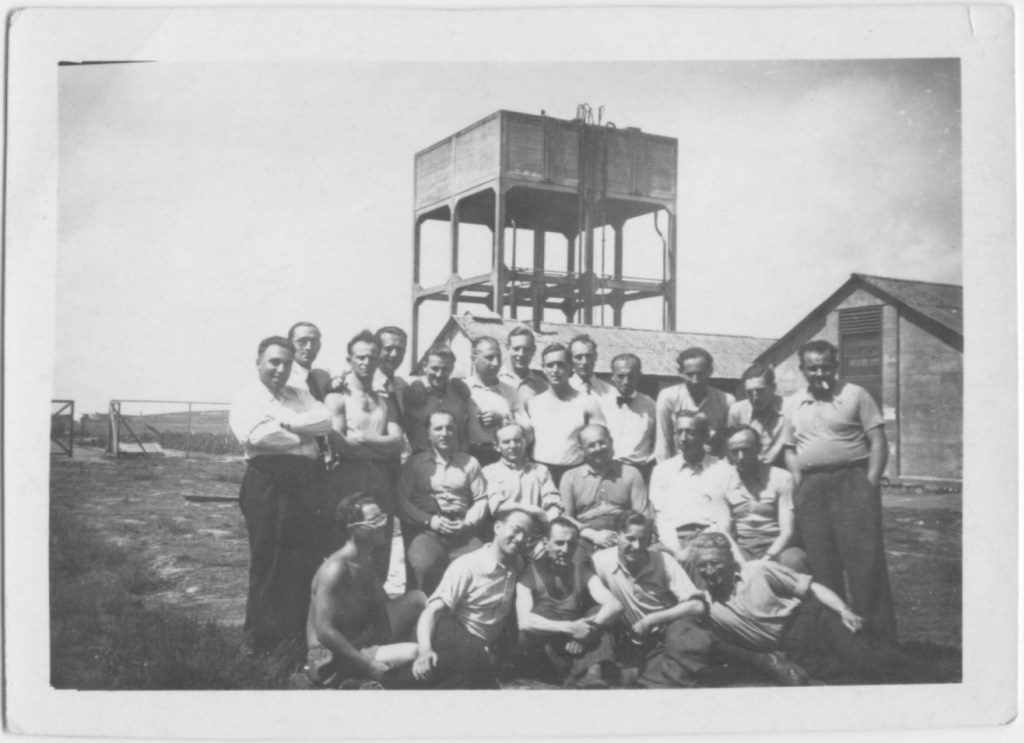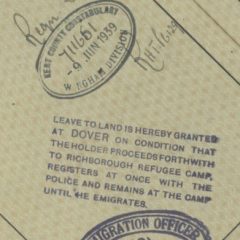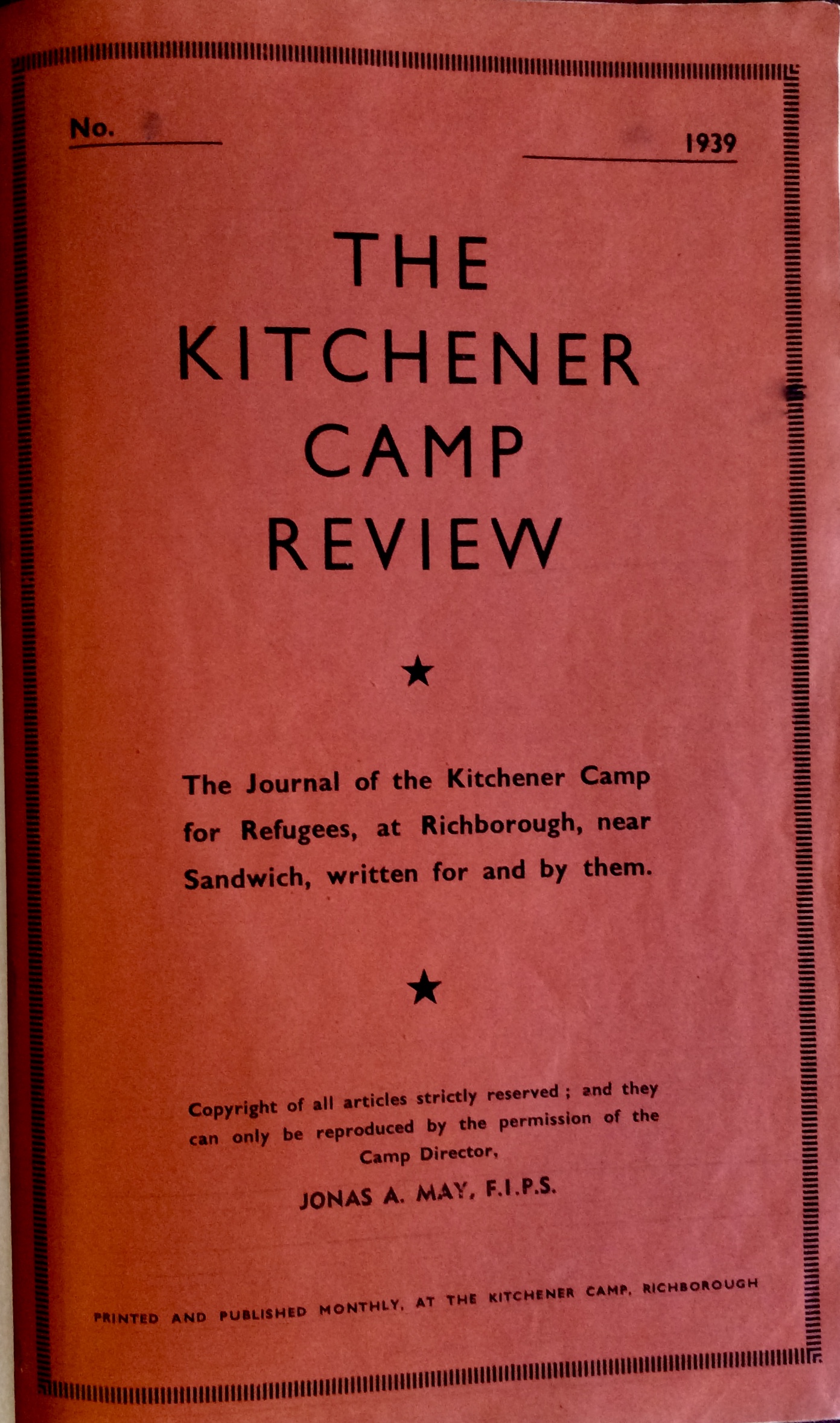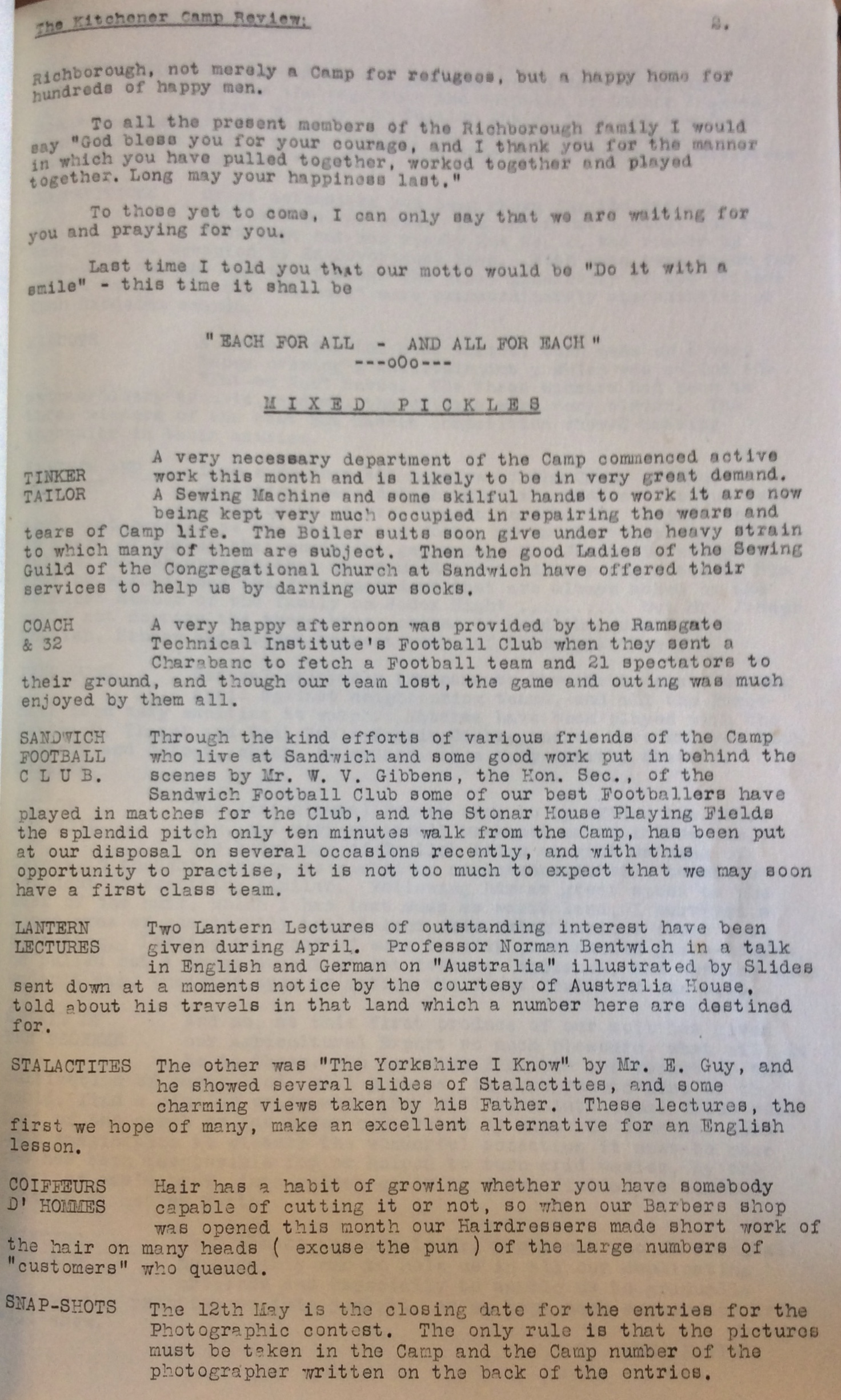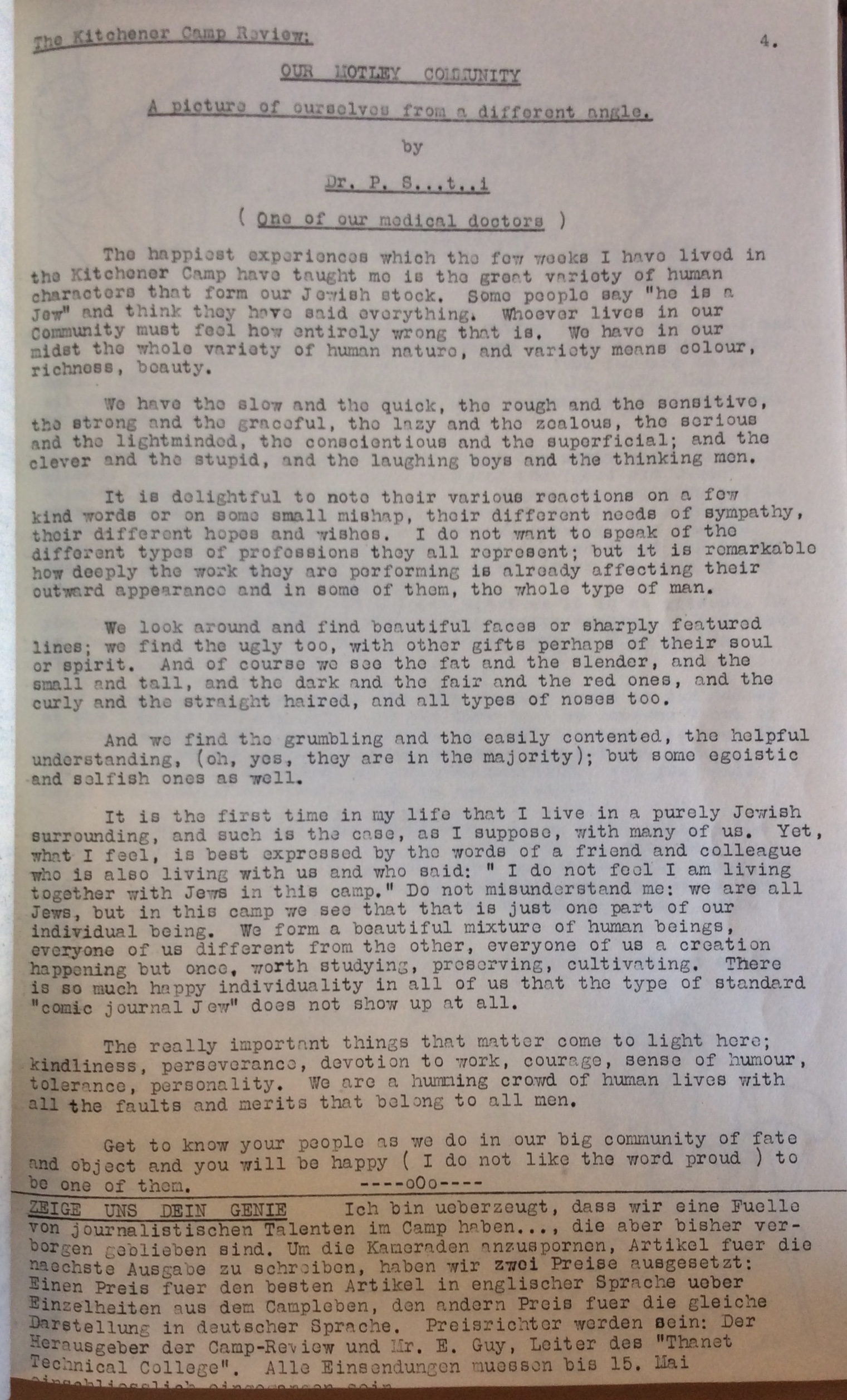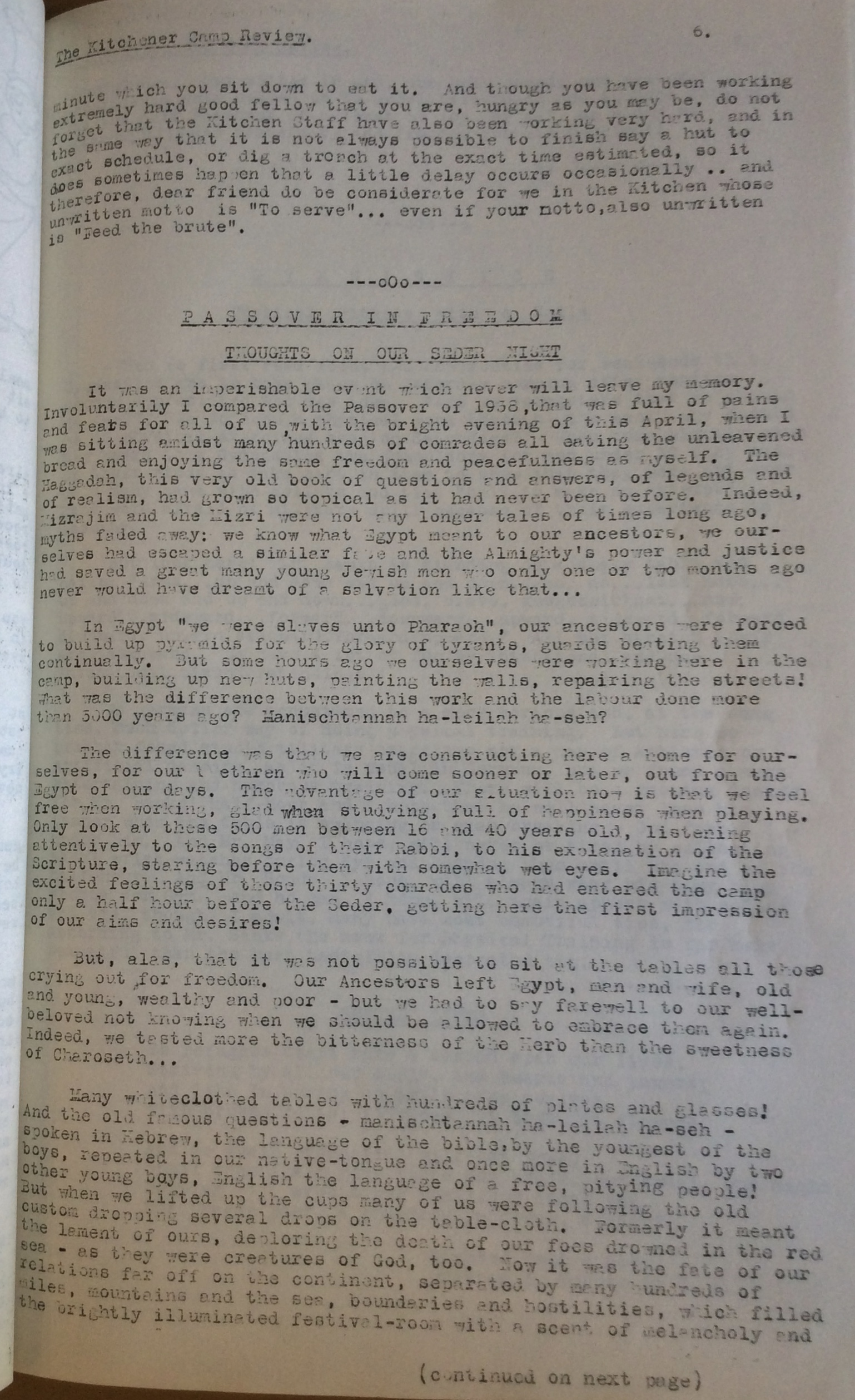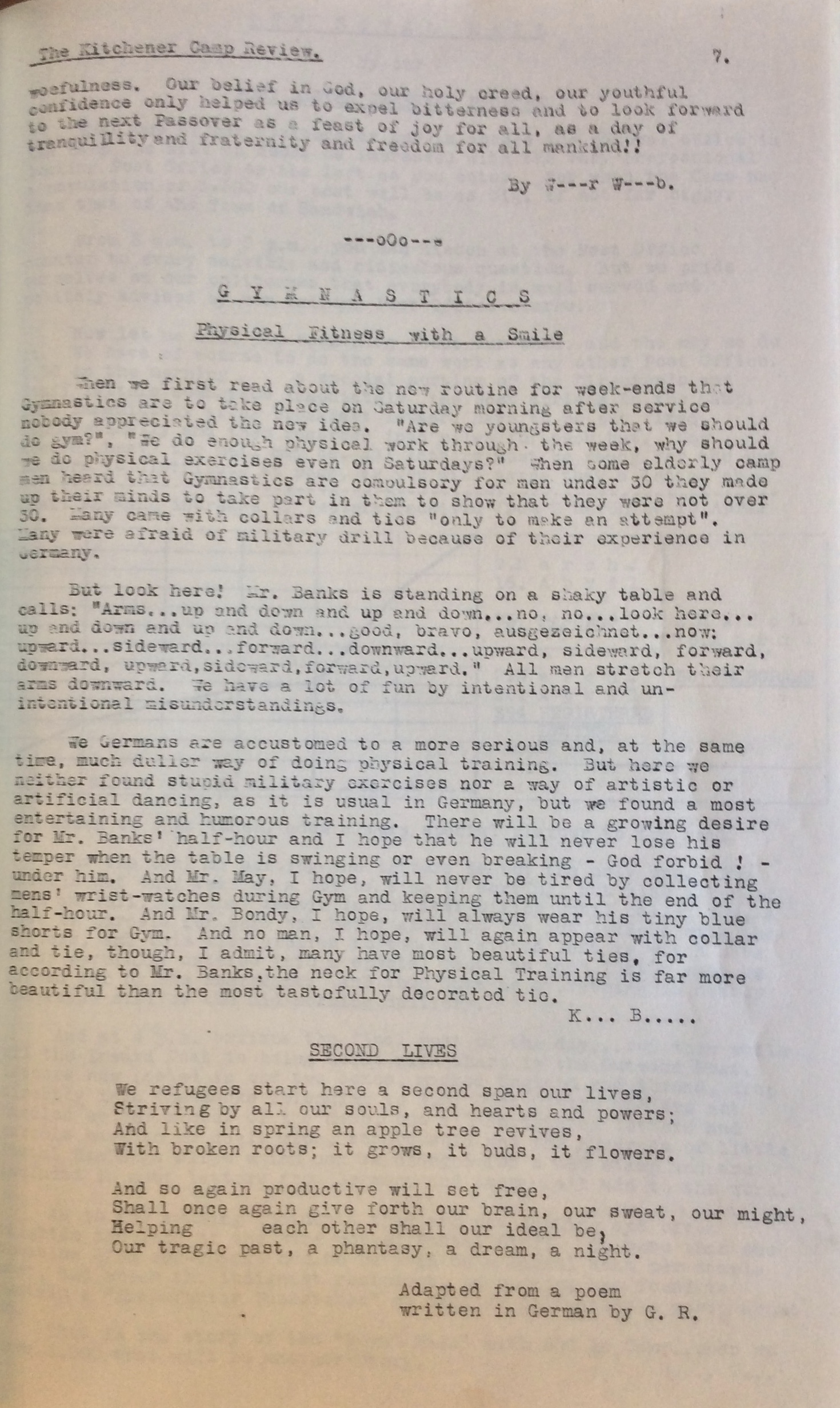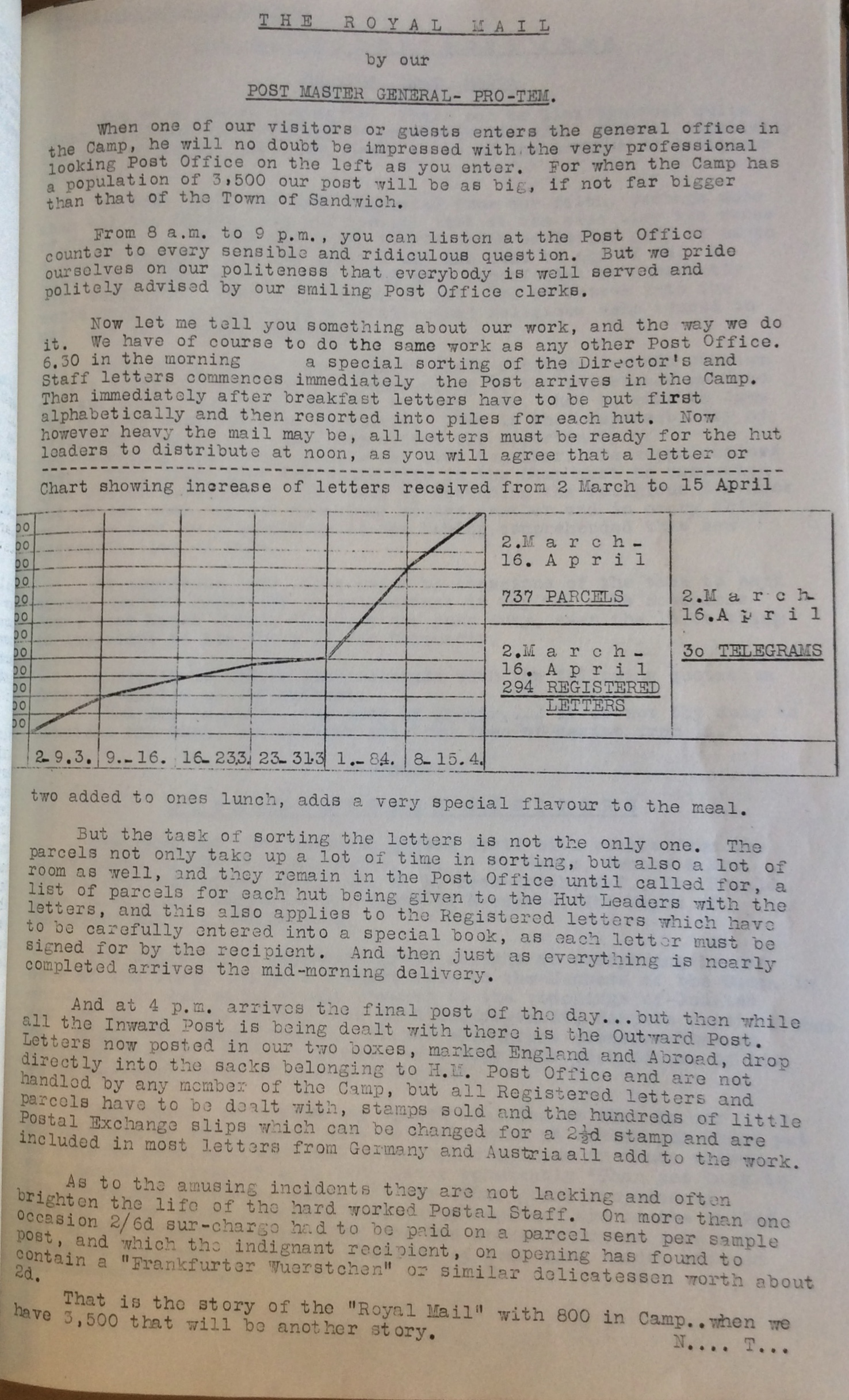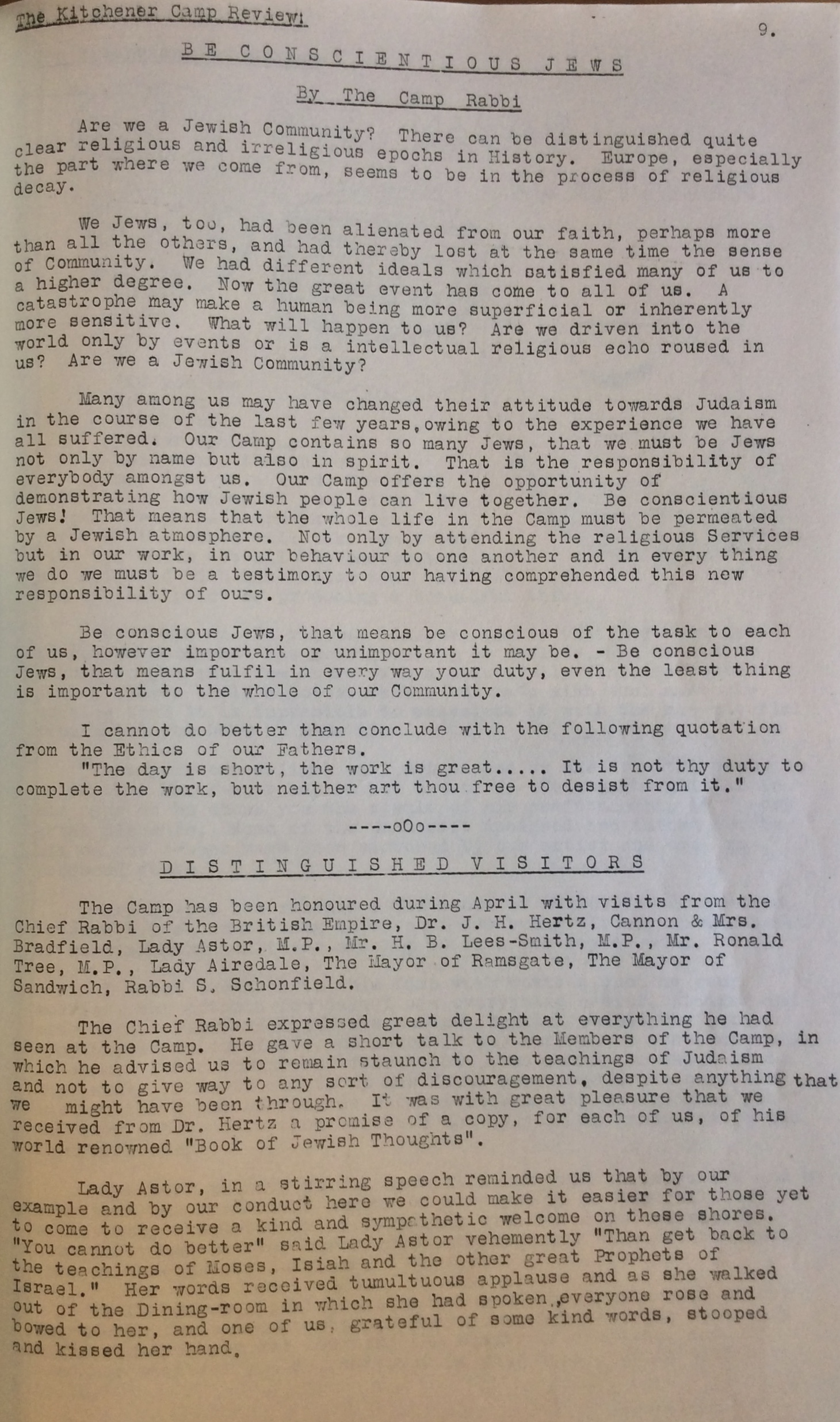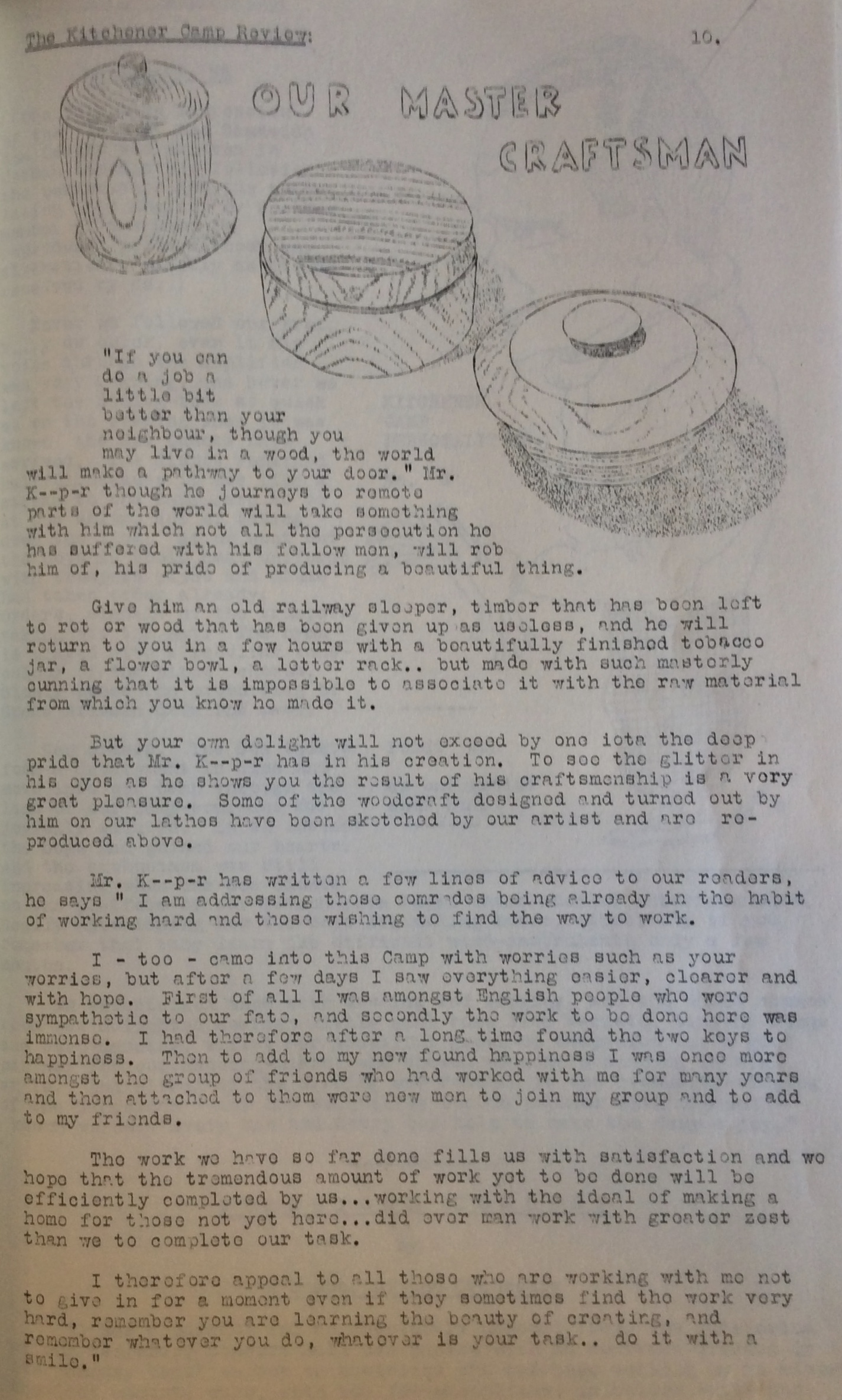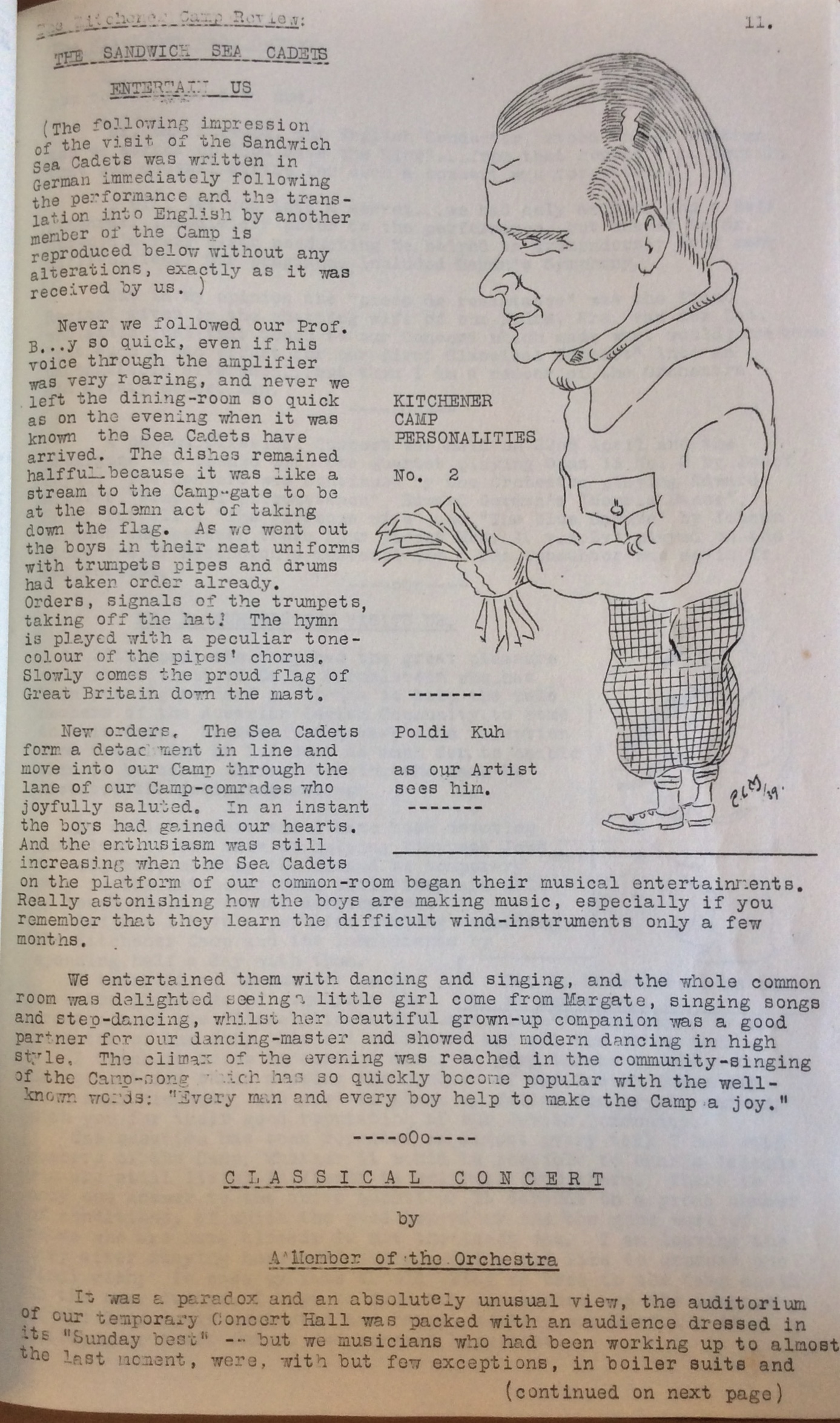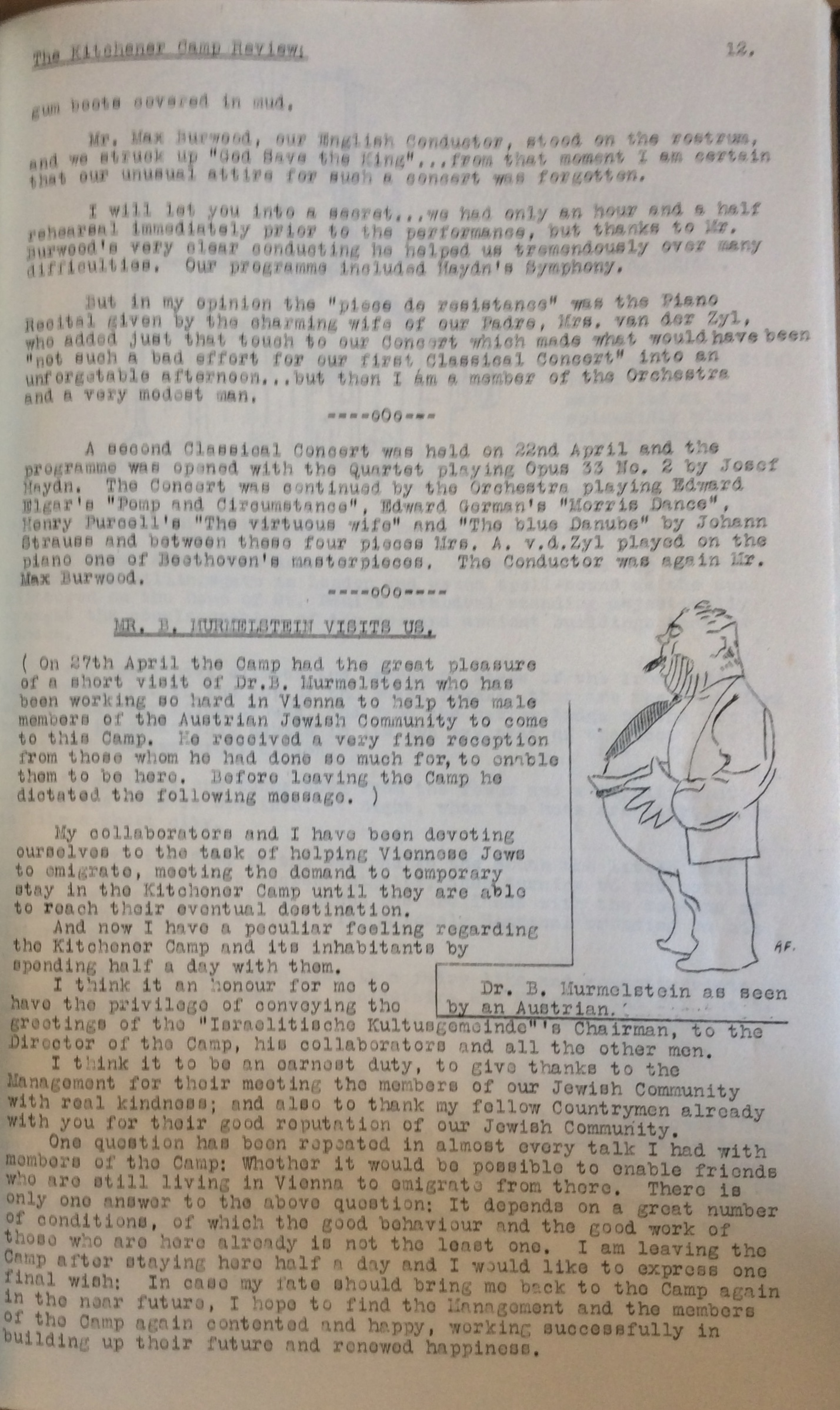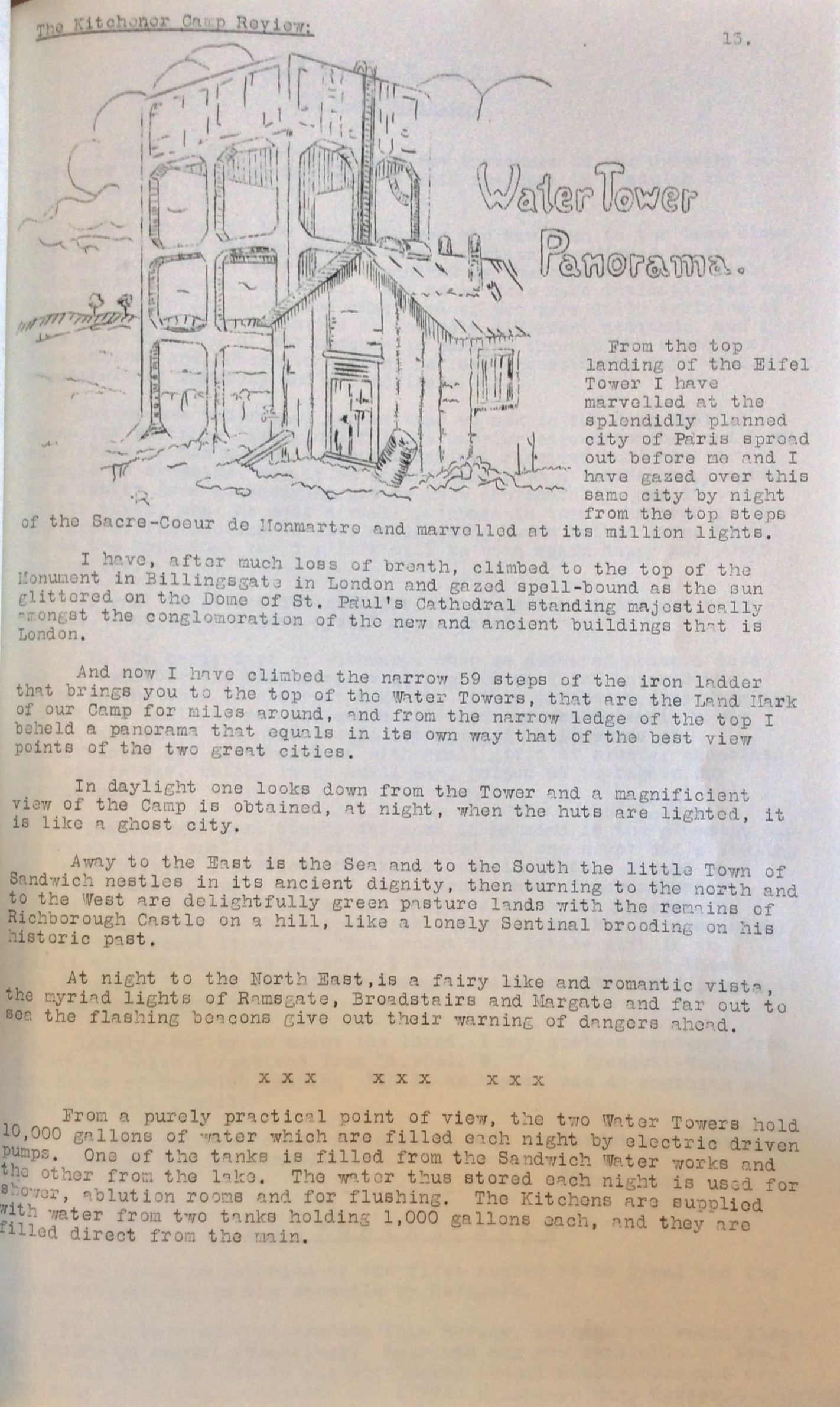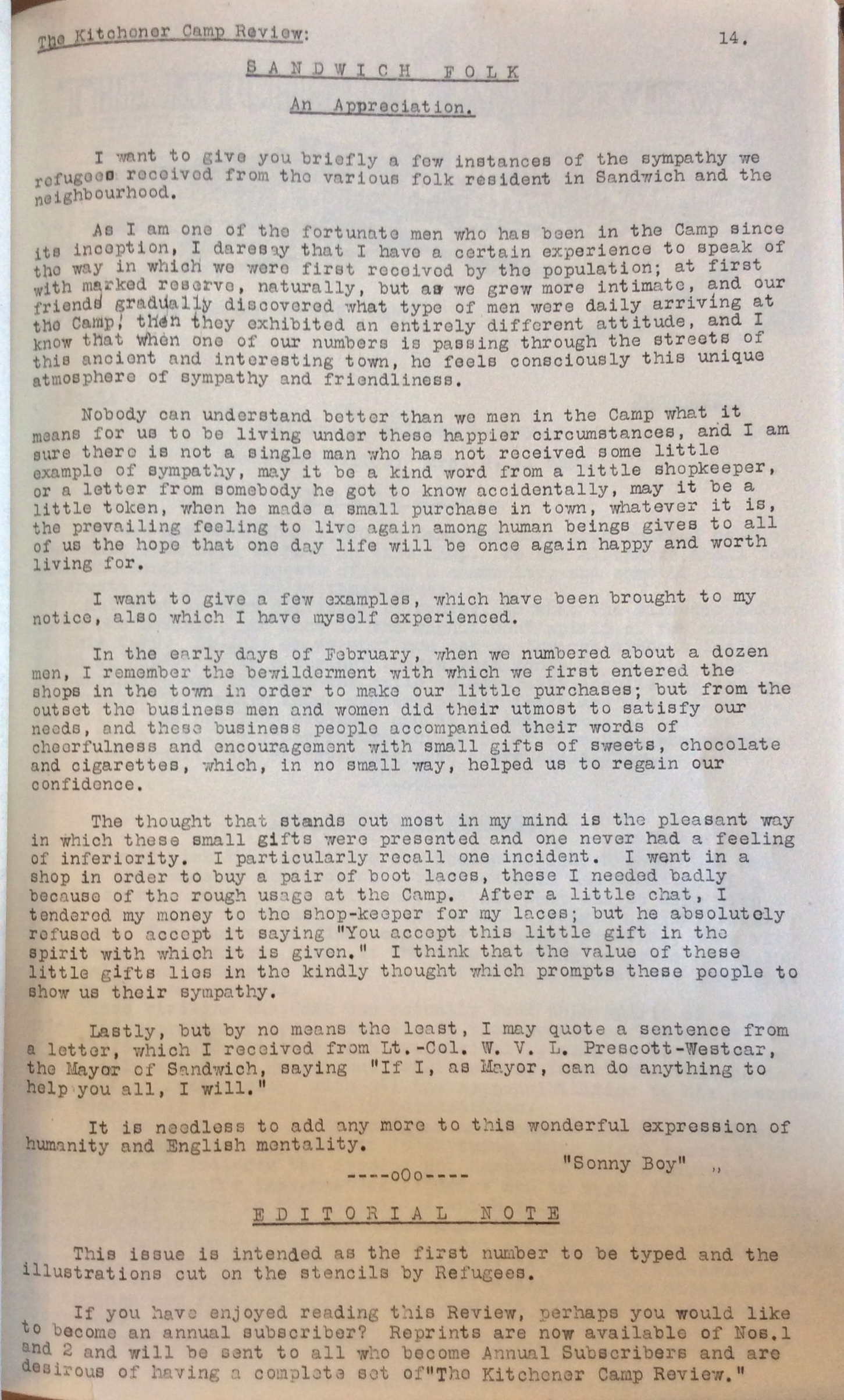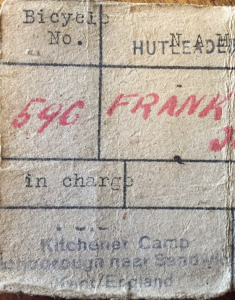
Letter extract from Else Weissenberg to her son Werner, in Kitchener camp Gleiwitz, 15th June 1939 Dear Werner ... We have cleaned your bike, it looks really good, as I have always said – don’t be too quick to discard it. Who would have thought you could use it for excursions in England. If the camp is only 40 [unit?] from the sea, you could go on foot easily to reach it.
Missing page 3
Dr P. S…t..i – although it ought to be simple to work out, this combination of letters does not match an entry for ‘Physician’ in the 1939 Register. Whoever this was might have migrated onwards before September 1939 when the Register was taken.
The ‘Camp Chief Cook’ was Jack Agin.
“Mr Banks” is Michael J Banks, born 1906, and listed as ‘Assistant Camp Director at Refugee Camp Richborough’.
The only man whose name fits the pattern of K… B….. exactly is Kurt Bendit, born 1913. He emigrated with his family to the USA on 19th May 1951, on a Cunard White Star ship, Georgic.
It is not possible to work out yet who GR might have been.
There is no ‘NT’ listed in the 1939 Register
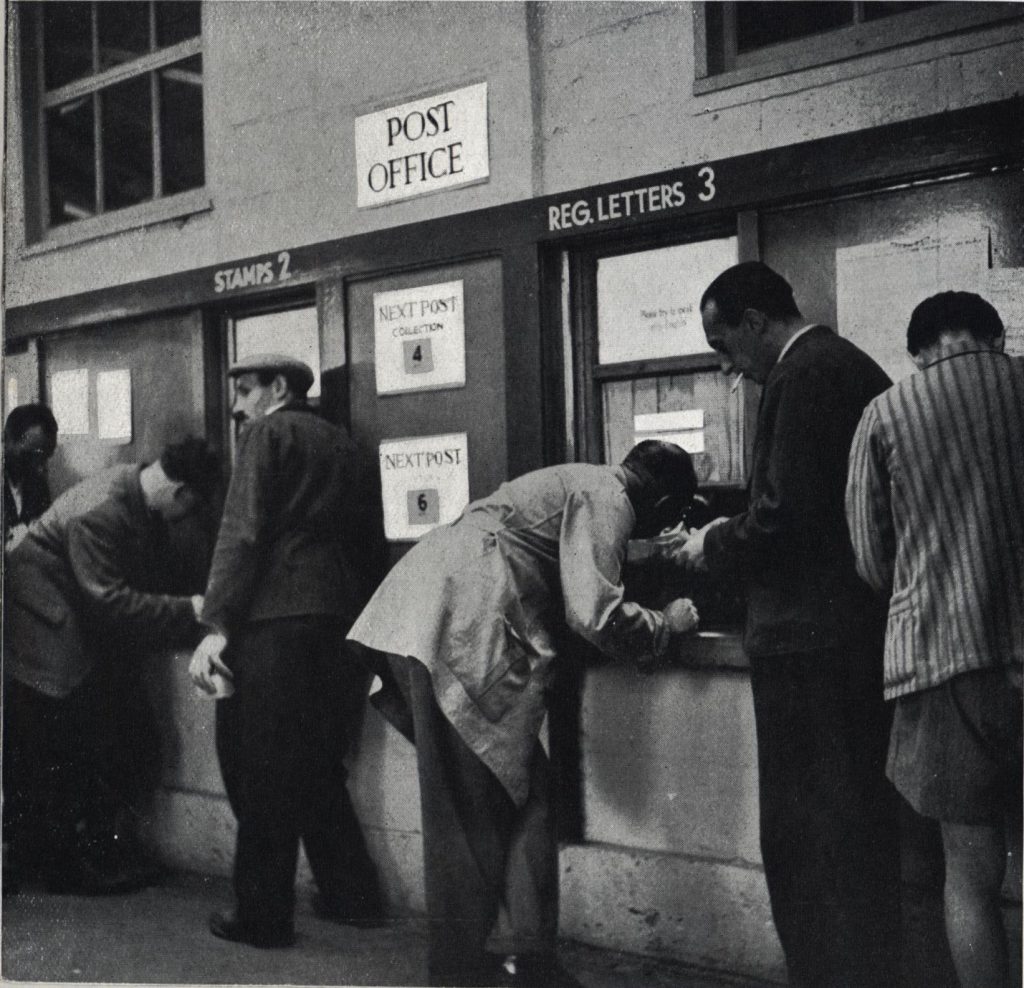
The main camp rabbi was Dr Werner van der Zyl, born in 1902. Van der Zyl’s wife Anneleise was also in Kitchener Camp when the 1939 Register was taken in September.
Joseph Hermann Hertz, born 1972, was the Chief Rabbi at this time. His name is listed on the ‘Gestapo Invasion Arrest List 1940’ – a list comprising over 2,300 names, including Lady Astor, Lord Baden-Powell, Neville Chamberlain and Winston Churchill.
An online copy of the Chief Rabbi’s book can be viewed here: https://archive.org/details/bookofjewishthou00hert/page/n11
Presumably, Mr K..p.r journeyed ‘to remote parts the world’ ahead of the 1939 Register because no name seems to fit these letters.
Poldi Kuh – Leopold Kuh – born in Berlin in 1910 – was a significant figure in Kitchener Camp. He is listed in the 1939 Register as ‘Engineer (machinery)’ and was a ‘Camp Foreman’. His wife Ruth (also born in Berlin, in 1916) had been a ‘Domestic teacher’ and in Kitchener was a ‘Domestic at Camp’. Kuh joined HM Forces when war was declared and after the war, in 1952, left for the USA on Cunard’s Queen Elizabeth.
Leopold (Poldi) Kuh had been a teacher at the Berlin-Niederschönhausen German Jewish training school, where some of the young Kitchener men originated.
From January 1934, Jewish adolescents and young adults, under the direction of engineer Leopold Kuh and his wife Ruth, had lived at the Niederschönhausen, training to be blacksmiths and metalworkers, as well as carpenters and gardeners. Girls were taught housekeeping by Ruth Kuh.
"On Thursday 9 March it was this beguiling atmosphere that greeted another large group of young men who arrived at lunchtime. These youngsters came straight from Germany and, like the Dovercourt boys, they already kew each other because they had been living together in a residential training camp for Jewish youths at a place called Niederschönhausen, very close to Berlin. As at Dovercourt, one hundred young men had been invited to volunteer to come to help rebuild the Kitchener Camp. Norman Bentwich had had a hand in this - in 1937 he had visited the Niederschönhausen camp as part of his duties as Director of Emigration and Training for the CBF and had been very impressed, particularly by its young leadership: "I cannot speak too highly of the way the place was run, or of the spirit which is being imbued into the students by Mr Kuh, who, while himself a man of only 32 years of age, has been able to control, with such excellent results, students of ages from 16 up to 50" (Ungerson, 2014, pp. 59-60).
Austrian men whose families have sent in information to the Kitchener project to date include: Adolf Pollatschek, locksmith Arnold Max Lachs, tie-maker Hans Friedrich Elias, Salesman (car parts) Eduard Elias, Salesman (car parts) Fritz Bleicher, furrier ('Agricultural worker in Camp') Nuchim Hersch Josefsberg, proprietor of textile business (agricultural worker in Kitchener Camp) Walter Kassern, milliner Herbert Finkelstein, textile technologist (weaver); in Kitchener, Herbert was 'Storeman (camp bicycle store)' Erna Finkelstein, housekeeper/carer for parents Fritz Nowak, electrotechnician Julius Gildener, Magistratsbeamter (lawyer/municipal clerk) Otto Ludwig Zwieback, textile worker (trainee in fruit farming at Kitchener) Moses Mordko Scherzer, clerk Viktor Sonnenfeld, upholsterer
